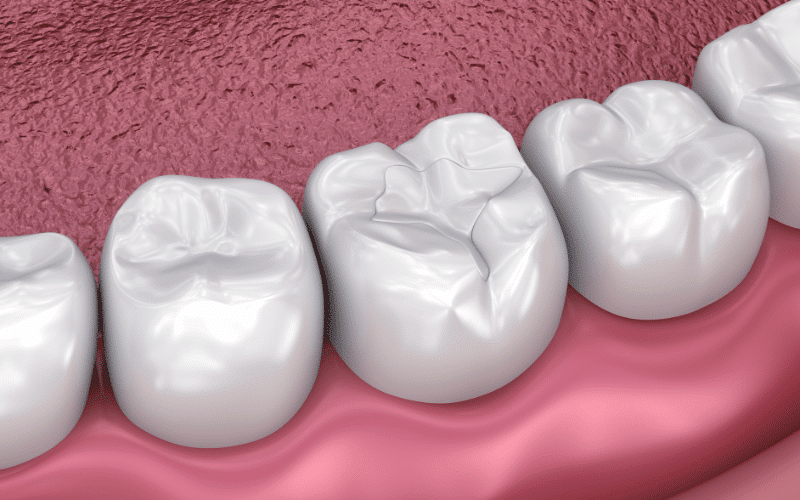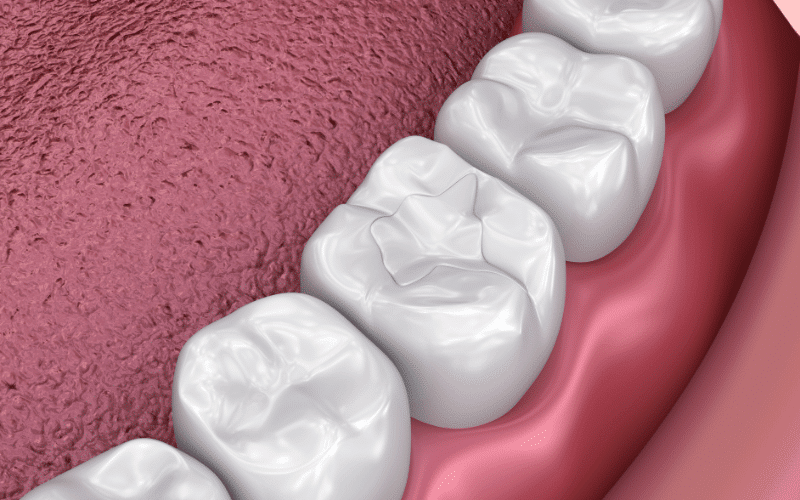Sealants vs. Fluoride: What’s Best for Your Child’s Dental Health?

Deciding on the best protection for your child’s teeth can feel like navigating a maze of choices. When it comes to maintaining dental health, you might wonder whether sealants for children or fluoride treatments offer more benefits.
Both options play pivotal roles in preventing cavities, but understanding their differences can help you make an informed decision.
Sealants act as a protective shield on the chewing surfaces of your child’s back teeth, while fluoride strengthens tooth enamel to resist decay. Each method offers unique advantages and limitations. In this blog, we’ll dive into how sealants and fluoride compare, exploring their effectiveness, application processes, and long-term benefits.
By the end, you’ll be equipped with the knowledge to choose the best option for your child’s dental health.
Dental Sealants
Dental sealants are a thin, protective coating applied to the chewing surfaces of back teeth. These sealants act as a barrier, preventing bacteria and food particles from getting trapped in the deep grooves of the teeth.
Benefits of Dental Sealants:
- Effective Cavity Prevention: Sealants significantly reduce the risk of cavities by covering areas that are difficult to clean with a toothbrush.
- Long-Lasting Protection: Sealants can last several years, offering continuous protection as long as they remain intact.
- Quick and Painless Application: The application process is quick and painless, requiring no drilling or numbing.
Application Process:
- Cleaning the Tooth: The tooth is cleaned to ensure the sealant adheres properly.
- Applying the Sealant: The sealant is painted onto the tooth’s surface.
- Curing: A special light is used to harden the sealant.
Sealants are especially beneficial for sealants for children, as kids often struggle with proper brushing techniques.
Fluoride Treatments: How They Work?
Fluoride treatments strengthen tooth enamel, making it more resistant to decay. Fluoride is a mineral found naturally in various foods and water sources, and it can also be applied topically in a dental office.
Benefits of Fluoride Treatments:
- Enamel Strengthening: Fluoride helps to remineralize enamel, reversing early signs of tooth decay.
- Decay Prevention: Regular fluoride applications can help prevent cavities and tooth decay.
- Versatility: Fluoride can be applied in various forms, including gels, foams, or varnishes.
Application Process:
- Professional Cleaning: The dentist cleans the teeth to remove plaque and debris.
- Fluoride Application: Fluoride is applied in the form of a gel, foam, or varnish.
- Absorption: The fluoride treatment is left on the teeth for a few minutes to allow proper absorption.
Effectiveness: Sealants vs. Fluoride
Both sealants and fluoride offer valuable benefits for dental health, but they address different aspects of cavity prevention.
Sealants:
- Targeted Protection: Sealants are ideal for protecting the chewing surfaces of back teeth.
- Prevention of Future Decay: They create a physical barrier against bacteria and food particles.
Fluoride:
- Strengthens Enamel: Fluoride strengthens tooth enamel, helping to prevent decay and cavities.
- Treats Early Decay: It can also help in the early stages of decay by remineralizing weakened enamel.
Comparing their effectiveness involves understanding their specific roles. Sealants provide a barrier against cavities, while fluoride enhances the strength of the tooth enamel.
Duration and Maintenance
Understanding how long each treatment lasts and how to maintain them is crucial for effective dental care.
Sealants:
- Longevity: Sealants typically last 5-10 years but may need to be checked and reapplied if they become chipped or worn.
- Maintenance: Regular dental check-ups ensure that sealants are intact and effective.
Fluoride Treatments:
- Frequency: Fluoride treatments are usually applied every 6-12 months, depending on the individual’s risk of decay.
- Maintenance: Good oral hygiene practices are essential to complement the benefits of fluoride treatments.
Regular maintenance and check-ups with your dentist ensure that both sealants and fluoride treatments continue to provide protection.
Cost Considerations
When deciding between sealants and fluoride treatments, consider the cost and value of each option.
Sealants:
- Initial Cost: Sealants may have a higher upfront cost but provide long-term protection.
- Insurance Coverage: Many dental insurance plans cover sealants for children, often at no additional cost.
Fluoride Treatments:
- Ongoing Cost: Fluoride treatments generally have a lower per-visit cost but may require more frequent applications.
- Insurance Coverage: Fluoride treatments are often covered by dental insurance, especially for children.
Balancing the costs and benefits of sealants and fluoride treatments helps make an informed decision based on your child’s dental needs.
Choosing the Right Option for Your Child
Deciding between sealants and fluoride treatments depends on your child’s specific dental needs and risk factors.
Factors to Consider:
- Age and Oral Health: Younger children who are more prone to cavities may benefit more from sealants.
- Current Dental Health: Children with early signs of decay might benefit from fluoride treatments to strengthen their enamel.
Choosing between sealants and fluoride treatments for your child’s dental health depends on their specific needs. Sealants provide a protective barrier against cavities, while fluoride strengthens enamel and helps prevent decay. Both treatments are valuable, and their effectiveness is enhanced by good oral hygiene and regular dental check-ups. Discussing your child’s needs with a dentist will help you make the best choice for their dental health and ensure long-lasting protection.


